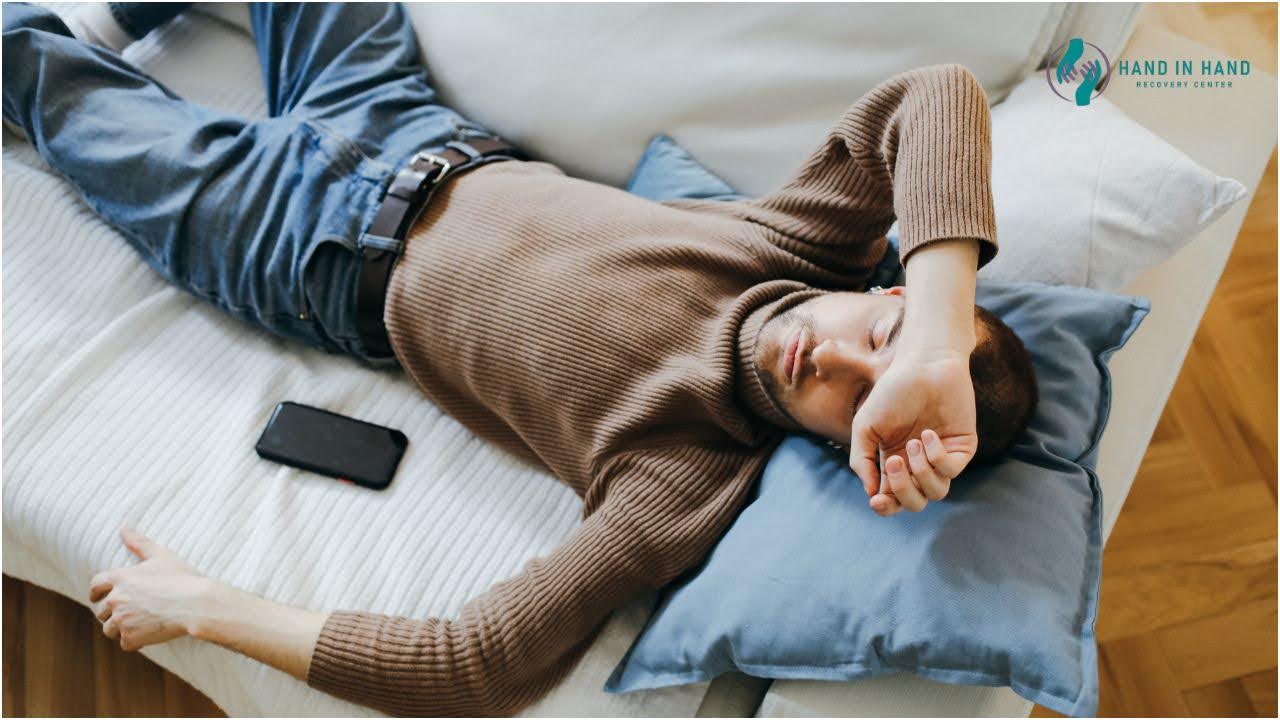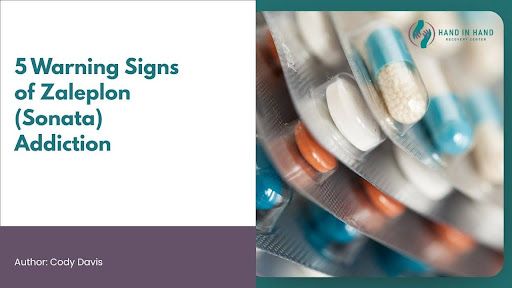Have you ever found yourself lying awake, wondering if your nightly Sonata (zaleplon) is starting to control you, rather than the other way around? You’re not alone!
Research shows that up to 20% of people prescribed sleep medications like zaleplon eventually notice signs of dependence or misuse. The good news is, recognizing zaleplon addiction warning signs early can open the door to real solutions.
From gentle, medically supervised detox and personalized therapy, to supportive groups and healthier sleep habits, there are proven ways to reclaim your nights and your peace of mind.
If you truly want to break free from the grip of dependence and rediscover the comfort of natural, peaceful sleep, let’s begin your journey toward a restful, drug-free life together.
If you truly want to break free from the grip of dependence and rediscover the comfort of natural, peaceful sleep, let’s begin your journey toward a restful, drug-free life together.
What Are the Warning Signs of Zaleplon (Sonata) Addiction?
Zaleplon addiction can develop quietly, often masked by the drug’s reputation as a “safer” sleep aid. What starts as legitimate insomnia treatment can spiral into compulsive use that disrupts every aspect of life.
At Hand in Hand Recovery Center, we’ve seen how early recognition and compassionate support can make all the difference for men and their families.
How Does Zaleplon Dependence Develop?
Zaleplon, sold under the brand name Sonata, belongs to a class of sleep medications called non-benzodiazepine hypnotics or “Z-drugs.”
These medications were designed to be safer alternatives to traditional benzodiazepines, with supposedly lower addiction potential. However, clinical experience tells a different story.
The drug’s ultra-short half-life of about one hour creates a false sense of security. Unlike longer-acting sleep aids that cause obvious next-day grogginess, zaleplon’s effects wear off quickly, making users feel they can take it without consequences.
This deceptive safety profile often leads people to use it more frequently or in higher doses than prescribed.

5 Early Behavioral Warning Signs to Watch For
Before zaleplon addiction becomes obvious, there are often subtle changes in daily habits and routines. Here are five early behavioral warning signs to look out for:
Taking More Than Prescribed
The most common early sign of zaleplon addiction is dose escalation. What begins as “just half an extra pill” to fall asleep can quickly become taking two, three, or more pills nightly. Users often rationalize this by saying the original dose “stopped working,” not recognizing they’ve developed tolerance.
Using for Non-Sleep Purposes
Another red flag is when people start taking zaleplon for reasons beyond insomnia. They might use it to manage daytime anxiety, cope with stress, or simply to feel relaxed. This shift from sleep aid to general mood regulator signals problematic use.
Extended Use Beyond Prescription
Zaleplon is intended for short-term use only, typically 1-2 weeks. When someone continues taking it for months or years, they’ve crossed into misuse territory. Many users don’t even realize this timeline exists, assuming they can take sleep medication indefinitely.
What Psychological and Emotional Changes Signal Addiction?
Addiction doesn’t just affect your actions, it can deeply impact your thoughts and emotions. Watch for these three psychological and emotional changes that may signal a growing dependence:
Preoccupation with the Medication
People developing zaleplon addiction become mentally consumed by their medication. They constantly worry about their supply, plan their day around when they can take their next dose, and feel anxious if they don’t have pills readily available. This preoccupation often becomes more important than work, relationships, or other responsibilities.
Mood Swings and Emotional Stability
Zaleplon addiction creates a cycle of emotional highs and lows. Users may feel calm and euphoric shortly after taking the medication, followed by increased irritability and anxiety as it wears off. These mood swings become more pronounced over time, affecting relationships and daily functioning.

Failed Attempts to Stop
Many people recognize their zaleplon use has become problematic and try to quit or cut back on their own. However, they find themselves unable to reduce their intake despite genuine desire to do so. This loss of control is a sign of addiction.
3 Physical Signs and Symptoms You Shouldn’t Ignore
Physical changes are often some of the first clues that something isn’t right. Here are three important signs and symptoms your body may be sending you:
Tolerance Development
As the body adapts to regular zaleplon use, the same dose produces weaker effects. Users need increasingly higher amounts to achieve the same sleep-inducing results. This physiological adaptation drives the behavioral pattern of taking more pills.
Withdrawal Symptoms
When zaleplon levels drop, users may experience withdrawal symptoms including rebound insomnia, anxiety, sweating, tremors, and in severe cases, seizures. The fear of these uncomfortable symptoms often perpetuates continued use, even when someone wants to stop.
Are You Engaging in Drug-Seeking Behaviors?
Sometimes, the drive to maintain access to medication can lead to behaviors you never expected. If you notice any of the following actions, it may be time to reach out for support:
Doctor Shopping
As tolerance increases and prescriptions run out early, people may visit multiple doctors to obtain overlapping prescriptions. They might claim their medication was lost, stolen, or ineffective to justify needing more pills or higher doses.
Illicit Procurement
When legitimate medical channels are exhausted, some individuals turn to illegal sources such as online pharmacies that don’t require prescriptions or street dealers. This behavior carries additional risks, as illegally obtained pills may be counterfeit or contaminated with dangerous substances.
How Does Zaleplon Addiction Affect Your Daily Life?
Zaleplon addiction can quietly start to interfere with everyday routines and relationships. These are some of the ways it may show up in your daily life:
Neglecting Responsibilities
Zaleplon addiction often leads to declining performance at work, school, or home. People may miss important appointments, fail to complete tasks, or withdraw from activities they previously enjoyed. The medication becomes their primary focus, overshadowing other life priorities.
Relationship Problems
Family members and friends typically notice personality changes, mood swings, and the person’s growing secrecy around their medication use. Trust breaks when loved ones discover lies about drug use or witness concerning behaviors.
What Are Complex Sleep Behaviors and Why Are They Dangerous?
One of the most dangerous warning signs is the development of complex sleep behaviors or parasomnias.
These include sleepwalking, sleep-driving, preparing and eating food, making phone calls, or having sex while not fully awake.

The FDA issued its strongest warning about these behaviors in 2019, as they can result in serious injury or death.
These behaviors can occur even with the first dose, but become more likely with higher doses or when zaleplon is combined with alcohol or other central nervous system depressants.
Is Zaleplon Addiction Linked to Other Substance Use?
Research shows that zaleplon addiction often occurs alongside other substance use disorders, particularly alcohol use disorder.
People may combine zaleplon with alcohol, opioids, or benzodiazepines, significantly increasing the risk of dangerous interactions, respiratory depression, and overdose.
At Hand in Hand Recovery Center, our dual diagnosis programs are designed to address these complex challenges with compassion and expertise.
When Should You Seek Professional Help for Zaleplon Addiction?
Zaleplon addiction requires professional zaleplon addiction treatment. The safest approach involves medically supervised detoxification, where healthcare providers can manage withdrawal symptoms and prevent dangerous complications like seizures.
Effective sonata addiction treatment typically includes:
- Medical detoxification with gradual dose reduction
- Behavioral therapy to address underlying sleep issues and develop coping strategies
- Treatment for co-occurring mental health conditions
- Support groups and ongoing monitoring
Hand in Hand Recovery Center in Marietta, Georgia, offers all these levels of care, including partial hospitalization, intensive outpatient, and holistic therapies customized for men.
Our team understands the unique challenges men face and provides a supportive, stigma-free environment for lasting recovery.
The key to successful recovery is recognizing that zaleplon addiction treatment isn’t just about stopping the medication, it’s about addressing the underlying factors that led to dependence and developing healthier ways to manage sleep and stress.
Closing
If you recognize these warning signs in yourself or a loved one, don’t wait for the situation to worsen. Zaleplon addiction is a serious medical condition that responds well to appropriate treatment.
Healthcare providers, like the experienced team at Hand in Hand Recovery Center, can assess the severity of dependence and recommend the most suitable treatment approach, whether that’s outpatient counseling, intensive outpatient programs, or residential treatment.
Remember that addiction isn’t a moral failing or lack of willpower, it’s a medical condition that requires professional care. With proper zaleplon addiction treatment, people can safely stop using the medication and develop healthier sleep habits that don’t rely on potentially dangerous drugs.
If you’re ready to take the next step, Hand in Hand Recovery Center is here to support you hand in hand on your journey to lasting recovery.

 info@handinhandrecovery.com
info@handinhandrecovery.com 3411 Austell Road Suite 200, Marietta, Georgia, United States
3411 Austell Road Suite 200, Marietta, Georgia, United States

